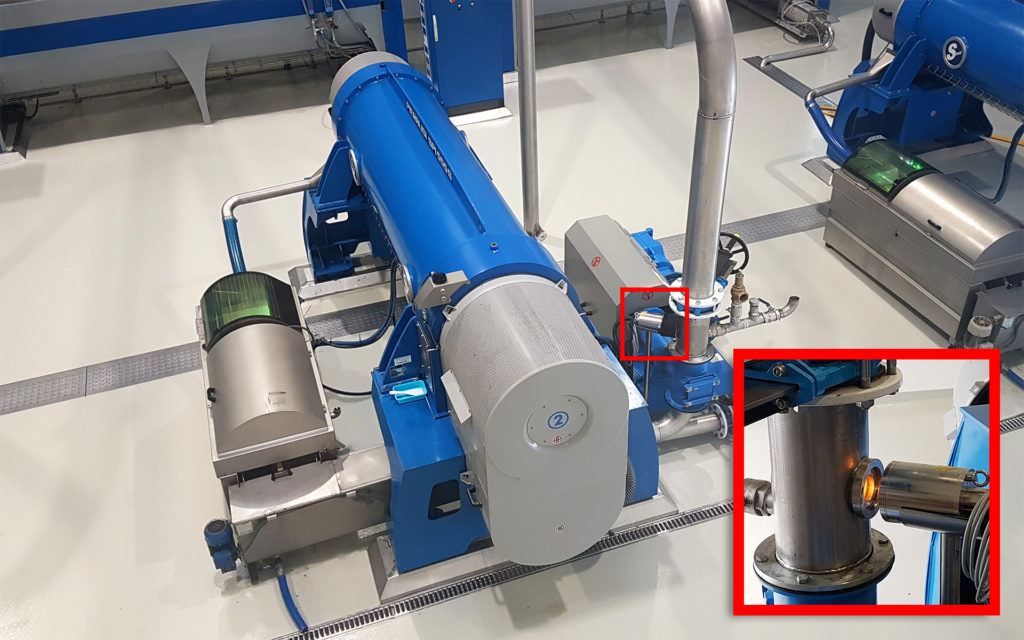An optimal crushing of the olives is essential for a good oil yield, since it helps to break the plant tissues and release the oil from the mesocarp cells. In the following step, the olive paste is treated in the mixer (malaxer) to form larger droplets of oil. Here the correct kneading time and temperature is important. Also selecting the right auxiliary materials like talc or enzymes is necessary. Moreover, choosing the correct speed, paste/water ratio and load capacity of the centrifugal decanter will also improve the oil yield.
To determine the maximum oil extraction yield and to optimize the operation of the olive production systems, a simultaneous variation of the parameters must be examined on the fly. Here, using online FT-NIR spectroscopy with the MATRIX-F and the contactless sensor head Q412 can help, because it enables a close control of olive pomace (alperujo) for residual oil content, which should be typically around 3% or lower.

Therefore, FT-NIR can find problems along the production chain and enable a quick reaction on varying process conditions. And by keeping the oil content of the press residues at a low level, the production site can run more profitable.
Moreover, the acidity can be measured directly in the olive paste. The acidity is the main criterion for the classification of the olive oil as “extra virgin”. So you know at each stage of production, if you are on track with your oil quality.
To learn more about the analysis of olives and olive oil in the lab or online, visit www.olive-nir.com or contact us directly.








